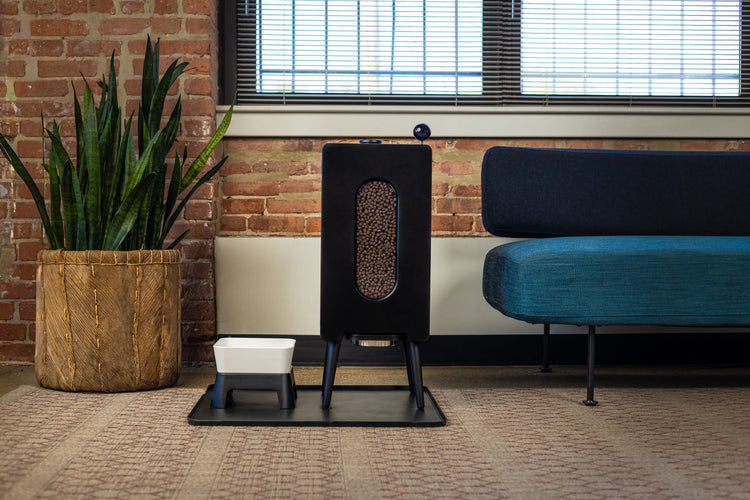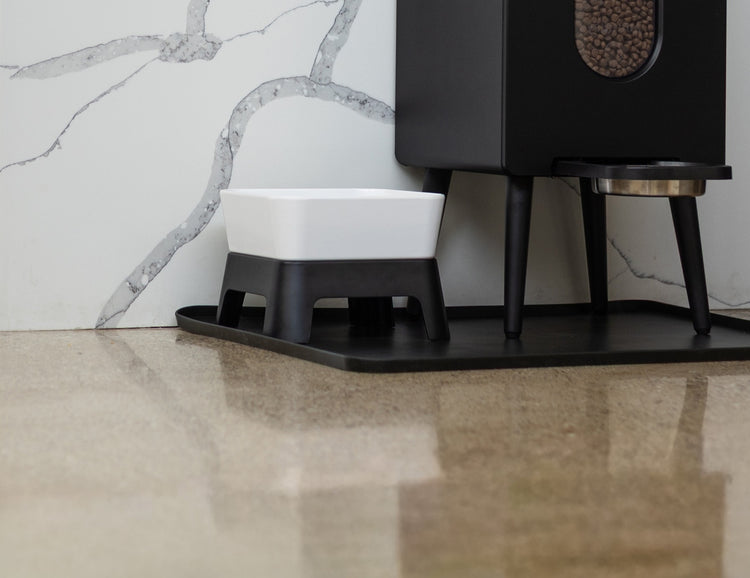How to Help a Dog Lose Weight Fast: A Comprehensive Guide
- Houndsy
Table of Contents
- Introduction
- Understanding Dog Obesity
- Consult Your Veterinarian
- Portion Control: No More Guesswork!
- Make the Switch to a Weight Control Diet
- Healthy Treats: Keep It to a Minimum
- Increase Physical Activity
- Tracking Progress
- Involve the Whole Family
- Maintaining Your Dog's Healthy Weight
- Conclusion
- FAQ
Introduction
Did you know that over 50% of dogs in the United States are considered overweight or obese? This startling statistic highlights the importance of maintaining a healthy weight for our furry companions. As loving pet owners, we want to ensure our dogs are not just happy, but also healthy and full of energy. Excess weight can lead to a myriad of health issues, including diabetes, heart disease, and joint problems, which can significantly shorten their lifespan and diminish their quality of life.
In this blog post, we will explore effective strategies on how to help a dog lose weight fast while ensuring their well-being throughout the process. We will cover everything from dietary adjustments and portion control to exercise routines and the importance of veterinary guidance. By the end of this guide, you will have a well-rounded understanding of how to embark on a successful weight-loss journey for your dog.
Let's dive into the essential steps that can lead to a healthier and happier life for your canine friend!
Understanding Dog Obesity
Before we can tackle weight loss, it’s crucial to understand what causes obesity in dogs. Obesity occurs when a dog consumes more calories than they expend, leading to excess fat storage. Several factors can contribute to this imbalance:
- Overfeeding: Many pet owners unintentionally overfeed their dogs, often due to free feeding or misjudging portion sizes.
- Lack of Exercise: A sedentary lifestyle, whether due to age, health issues, or lack of owner engagement, can lead to weight gain.
- Age and Breed: Certain breeds are predisposed to obesity, and older dogs may have lower metabolic rates and reduced activity levels.
- Medical Conditions: Health issues such as hypothyroidism or Cushing's disease can also lead to weight gain.
Recognizing these factors is the first step toward implementing an effective weight-loss plan tailored to your dog's specific needs.
Consult Your Veterinarian
Before embarking on any weight-loss journey, it’s imperative to consult your veterinarian. They can perform a thorough examination to rule out any underlying health conditions that may contribute to your dog's weight gain. Additionally, your vet can help set realistic weight-loss goals based on your dog's size, breed, and overall health.
Key Aspects of the Vet Consultation:
- Body Condition Score (BCS): Your vet will utilize a BCS system to assess your dog’s weight relative to their ideal weight.
- Dietary Recommendations: They can suggest specific diets or therapeutic foods designed for weight loss, which often have lower caloric density and higher fiber content.
- Monitoring: Regular check-ups will allow for adjustments to the diet and exercise plan based on your dog’s progress.
Portion Control: No More Guesswork!
One of the most significant changes we can make to help our dogs lose weight is to control their caloric intake. Many dog owners rely on feeding guidelines provided by pet food manufacturers, which can be misleading. Instead, we recommend:
- Measuring Food: Use a kitchen scale or measuring cups to ensure accuracy in portion sizes. This prevents accidental overfeeding, which is especially crucial for smaller breeds.
- Scheduled Feeding: Establish a consistent feeding schedule, usually once or twice a day, to help regulate your dog’s metabolism.
- Caloric Intake Calculation: Work with your veterinarian to determine how many calories your dog needs for weight loss. Generally, a reduction of 10-20% in caloric intake is a good starting point.
Example of Portion Control
If your dog typically consumes two cups of kibble a day, and their ideal caloric intake is calculated at 600 calories, you might start by reducing their intake to 1.5 cups while monitoring their weight closely.
Make the Switch to a Weight Control Diet
Switching to a high-protein, low-fat diet can significantly support your dog's weight loss goals. Many pet food brands offer specific "weight control" formulas that are designed to promote satiety while providing essential nutrients. Here’s what to look for:
- High Fiber Content: Fiber helps your dog feel fuller for longer, reducing the urge to beg for more food.
- Low Fat: Lower fat content reduces overall caloric density, allowing your dog to consume a more significant volume of food without exceeding calorie limits.
- Quality Ingredients: Choose foods with whole, natural ingredients, as they tend to be more nutritious and beneficial for your dog’s health.
Consult your veterinarian for recommendations on the best weight control diets tailored to your dog’s individual needs.
Healthy Treats: Keep It to a Minimum
While treats are an essential part of any training regimen or bonding experience, they can quickly add unwanted calories to your dog's diet. To help your dog lose weight, consider the following tips:
- Limit Treats: Treats should make up no more than 10% of your dog's daily caloric intake. If your dog needs 600 calories, only 60 calories should come from treats.
- Healthier Alternatives: Instead of high-calorie commercial treats, consider offering healthy options like carrot sticks, apple slices (with seeds removed), or green beans. These snacks are low in calories and can satisfy your dog's cravings.
- Adjust Portion Sizes: If you're using treats for training, be sure to subtract those calories from their daily food intake to maintain the overall caloric balance.
Increase Physical Activity
Exercise is a crucial component of any weight-loss program. Regular physical activity helps burn calories and increases your dog’s overall health and energy levels. Here are some tips to boost your dog’s activity:
- Daily Walks: Aim for at least 30 minutes of brisk walking each day. This not only helps with weight loss but also provides mental stimulation and social interaction.
- Playtime: Engage in interactive play with your dog. Games like fetch, tug-of-war, or agility training can make exercise fun and rewarding for both of you.
- Gradual Increases: If your dog is overweight, start with shorter walks and gradually increase the duration and intensity as they lose weight.
Example of an Exercise Routine
- Morning: 15-minute brisk walk
- Afternoon: 10 minutes of fetch or tug-of-war
- Evening: 15-minute walk or play session in the backyard
Tracking Progress
Monitoring your dog’s weight loss progress is vital for ensuring the effectiveness of your plan. Here’s how to keep track:
- Regular Weigh-Ins: Weigh your dog weekly or bi-weekly using a scale. Record the weight to map their progress accurately.
- Food and Activity Diary: Maintain a log of your dog's food intake, treats, and exercise. This will help you identify patterns and make necessary adjustments.
- Adjust Plans as Needed: If your dog is not losing weight, consult your veterinarian for adjustments to their diet or exercise routine.
Involve the Whole Family
Weight loss is a team effort, and everyone in your household should be on board with your dog’s weight-loss journey. Here’s how to ensure consistency:
- Education: Educate family members about the importance of maintaining your dog’s diet and exercise routine.
- Meal Prep: Assign a family member to handle feeding times, ensuring that everyone follows the set schedule without overfeeding.
- Participate in Exercise: Encourage all family members to engage in daily walks or playtime with your dog to reinforce the new routine.
Maintaining Your Dog's Healthy Weight
Once your dog reaches their ideal weight, the journey isn’t over. It’s crucial to maintain that weight to ensure long-term health. Here are some strategies to keep your dog healthy:
- Regular Vet Check-Ups: Schedule routine visits to your veterinarian to monitor your dog’s weight and overall health.
- Stick to a Maintenance Diet: Consult your vet about transitioning to a maintenance formula that still meets your dog's nutritional needs without promoting weight gain.
- Continue Exercise: Maintain an active lifestyle for your dog to prevent the risk of regaining weight.
Conclusion
Helping your dog lose weight fast can significantly enhance their quality of life and longevity. By implementing the strategies outlined in this guide—consulting your veterinarian, managing portions, switching to a weight control diet, limiting treats, increasing physical activity, and tracking progress—you can create a sustainable weight-loss plan for your furry friend.
Remember, patience and consistency are key. Every dog is unique, and results may vary, but with dedication, you can achieve a healthier and happier life for your beloved pet.
Are you ready to elevate your dog’s feeding experience and support their weight loss journey? Explore our Houndsy Kibble Dispenser designed to simplify meal portions and enhance your dog’s feeding routine with style and ease.
FAQ
Q: How quickly can my dog lose weight? A: A safe and sustainable weight loss rate for dogs is typically 1-2% of their body weight per week. Rapid weight loss can lead to health issues, so it's essential to consult your veterinarian.
Q: Can I still give my dog treats while they are on a diet? A: Yes, but treats should not exceed 10% of your dog’s daily caloric intake. Opt for healthier options and adjust the main meal portions accordingly.
Q: What types of exercises are suitable for overweight dogs? A: Start with low-impact activities like walking or swimming, and gradually introduce more vigorous exercises as your dog loses weight and gains stamina.
Q: How often should I monitor my dog’s weight? A: Weigh your dog weekly or bi-weekly and keep a log to track their progress. Regular visits to your veterinarian are also crucial for ongoing assessment.
By following these guidelines and maintaining a commitment to your dog's health, you can successfully help them lose weight and lead a happier, more active life.












